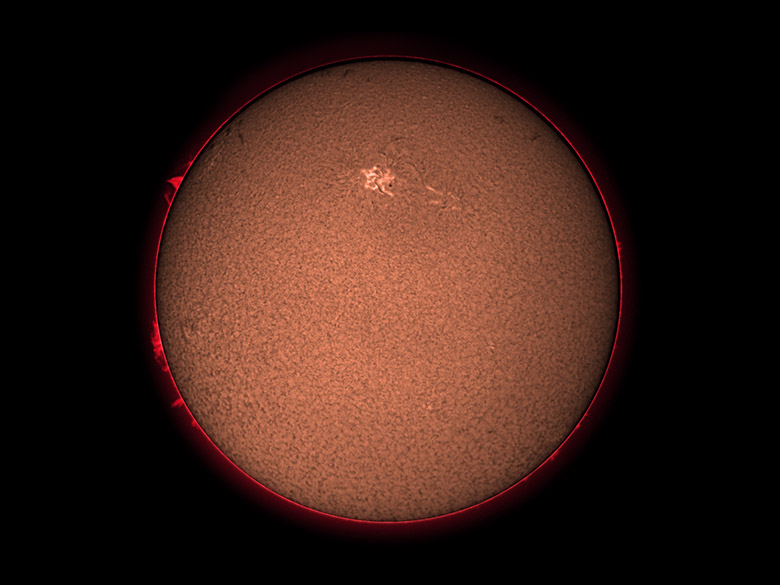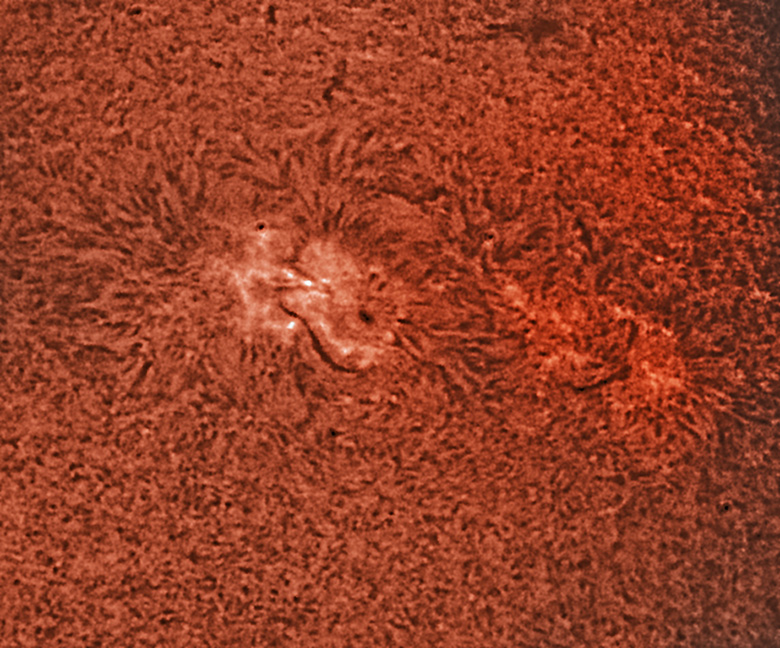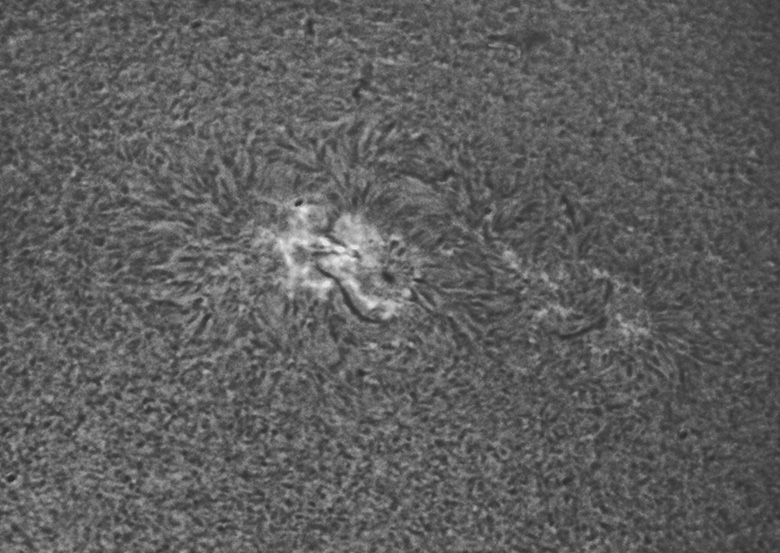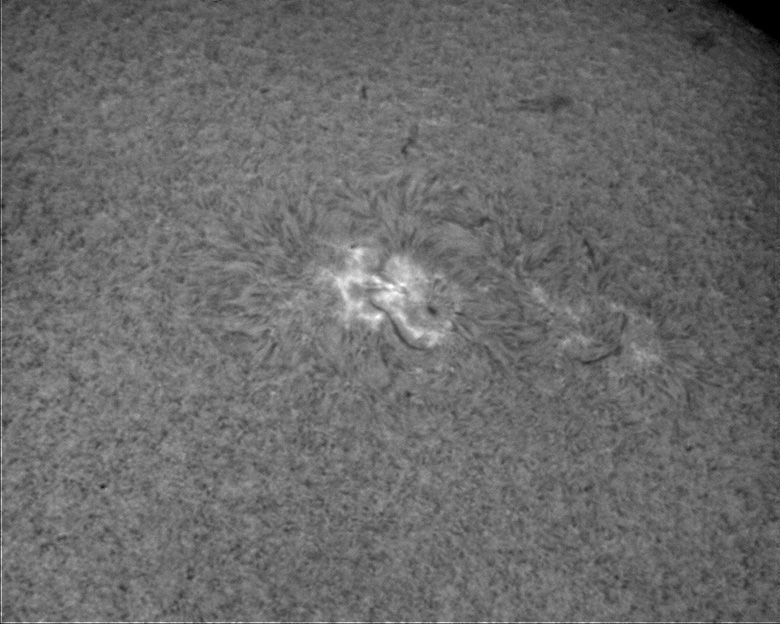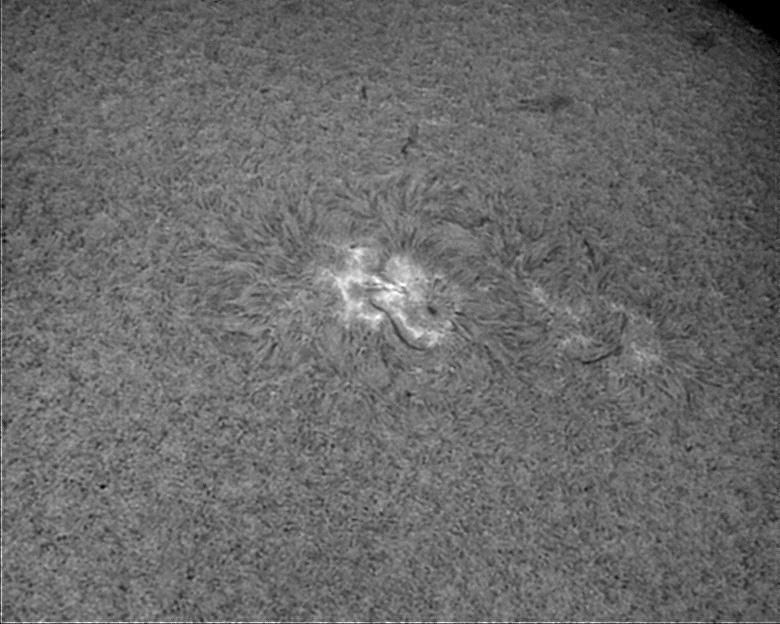|
Staring at the Sun, 13 :: home :: |
|
7/24/2010. Just keeping my hand in. After a few cloudy days, I set up in the afternoon for a couple of shots. There was nothing special going on and no new techniques I wanted to try out apart from seeing if I could get my videocam to work with the solar outfit (yes, for relatively tight close-ups it works fine, but I haven't worked out a full-disk set up). The air was decidely lively, probably dooming efforts to get anything close to diffraction limited with the Canon. You can see in the full-resolution crop up above that detail got pretty soft. The crop comes from this full-disk image:
7/25/2010. There was a bit of a break in "serious" effort there while I took care of some web business and awaited delivery of the parts and pieces to try a 90mm objective with the Lunt's filters. The last piece for that project was supposed to arrive yesterday (Saturday) via FedEx home delivery, but who's suprised that it did not? They don't run on Sunday or Monday, so... stay tuned. In the meantime, AR 11089 has rotated into prime viewing position. What made me get the camera out was the dramatic solar landscape of filaments and promincences below. The view clearly reveal them to be instances of the same physical process. The mid aftenoon air was slightly hazy, but it was very still. The visual impression of the Sun (sharp!) was born out in the images. That's a pretty faithful rendition, lacking some disk detail and shown in orange which is easier on the eyes than ruby. Look at this and you can be sure that glowing prominences and sooty filaments are different presentations of the very same animal:
The outer reaches of the solar territories affected by AR 11089 appear at lower right. Here's a full-resolution crop of the active region which lies just outside the frame above. At the eyepiece, you can see all this detail but it is more delicate when viewed live. The tones are more subtle and the lines are more finely drawn.
Today I'm using a slightly different image train: two, 2x barlows in place of one barlow with an extension tube. The usual barlow lens remains screwed into the 1.25-inch eyepiece adapter but today that adapter was instered into an Orion Shorty Barlow and that was insrted into the B600 blocking filter. As a result, today's image scale is larger than usual. Even so, images seem cleaner. Mechanically, things are more comfortable because the camera is less extended to the side of the tube. For focusing, I used a jeweler's visor that my mother bought as a low vision aid. It didn't work worth a damn for reading, but it's just the ticket for focusing the 50D in Liveview mode. In fact, these may be the first solar images I've made that were really in focus. Let's try to make a habit of that. The widefield "panorama" of filaments and prominences is the best three or four out of ten 1/5 second exposures aligned and added in Photoshop following red Bayer plane extraction in Maxim. The closeup of AR11089 is more experimental. It's the best seven out of twelve 1/4 second frames stretched to the range of the image in Maxim and then manually aligned and averaged in Photoshop using the "overlay" blending mode. While working this up, I noticed that incorporating a layer which is slightly misaligned in the "difference" mode may help to reveal smaller details. I need to experiment some with that. Then I decided to give Registax a whirl. Need to figure that out.
|
:: top ::
© 2010, David Cortner

